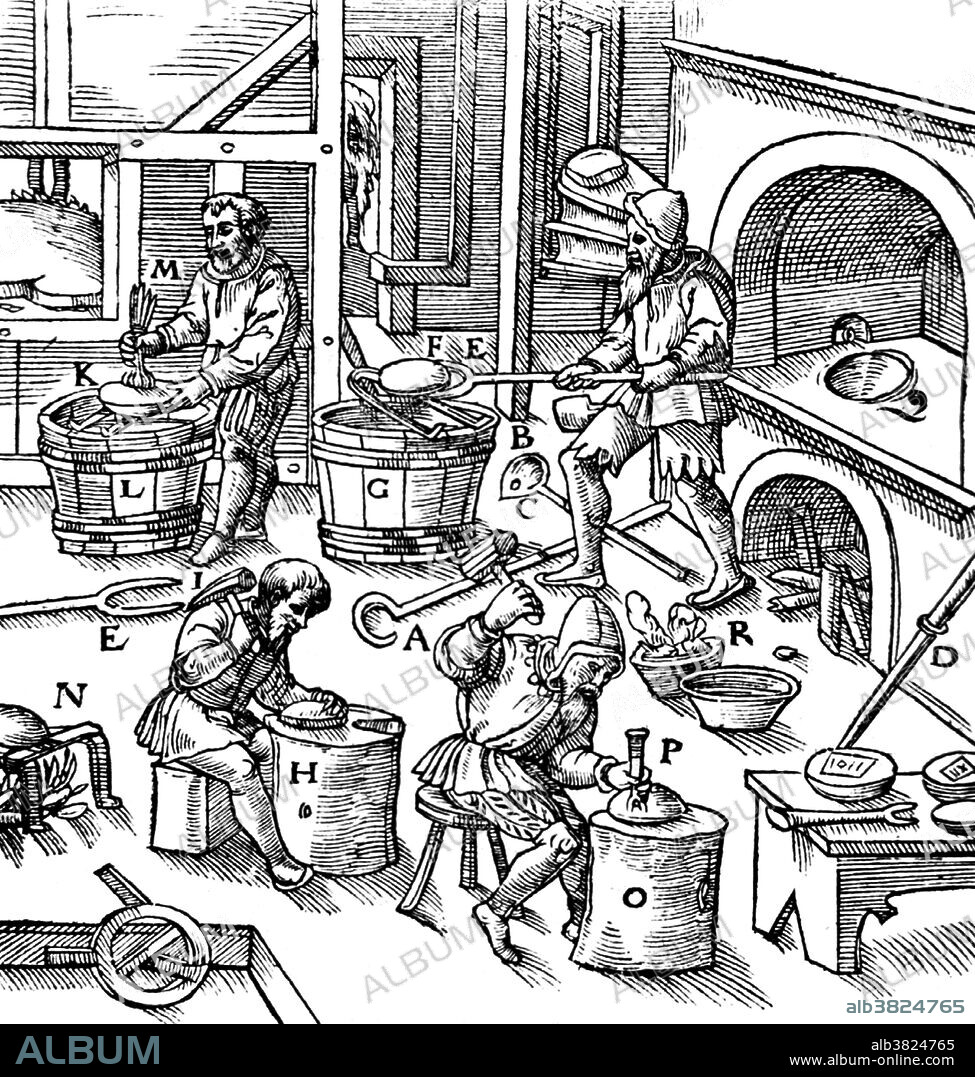alb3824765
De Re Metallica, Metallurgy Workshop, 16th Century

|
Añadir a otro lightbox |
|
Añadir a otro lightbox |



¿Ya tienes cuenta? Iniciar sesión
¿No tienes cuenta? Regístrate
Compra esta imagen

Título:
De Re Metallica, Metallurgy Workshop, 16th Century
Descripción:
Ver traducción automática
Woodcut from Georgius Agricola's De Re Metallica. Interior view of a workshop showing four men at various stages of the metallurgical process. Georgius Agricola (1494-1555) was a German scholar and scientist. Known as "the father of mineralogy". He is best known for his book De Re Metallica, published in 1556, a treatise on mining and extractive metallurgy, illustrated with woodcuts illustrating processes to extract ores from the ground and metal from the ore, and the man uses of water mills in mining. Agricola described and illustrated how ore veins occur in and on the ground, making the work an early contribution to the developing science of geology. He described prospecting for ore veins and surveying in great detail, as well as washing the ores to collect the heavier valuable minerals, such as gold and tin. It was also an important chemistry text for the period and is significant in the history of chemistry. De re metallica is considered a classic document of Renaissance metallurgy, unsurpassed for two centuries.
Crédito:
Album / NLM/Science Source
Autorizaciones:
Modelo: No - Propiedad: No
¿Preguntas relacionadas con los derechos?
¿Preguntas relacionadas con los derechos?
Tamaño imagen:
3150 x 3307 px | 29.8 MB
Tamaño impresión:
26.7 x 28.0 cm | 10.5 x 11.0 in (300 dpi)
Palabras clave:
1555 • ALEMAN • ARTE • BLANCO Y NEGRO • CIENCIA • CIENTIFICO • DIBUJO • EUROPEO • FAMOSO • FIGURA • GENTE • GEOLOGIA • GRABADO EN MADERA • HISTORIA • HISTORICO • HOMBRE • HOMBRES • ILUSTRACION • IMPORTANTE • MASCULINO • MINERIA • OBRA DE ARTE • PERSONA • PERSONALIDAD • PERSONALIDADES • PLANCHA DE MADERA • QUIMICA • RENACIMIENTO • RETRATO DE HOMBRE • SIGLO XVI • XILOGRAFIA
 Pinterest
Pinterest Twitter
Twitter Facebook
Facebook Copiar enlace
Copiar enlace Email
Email
